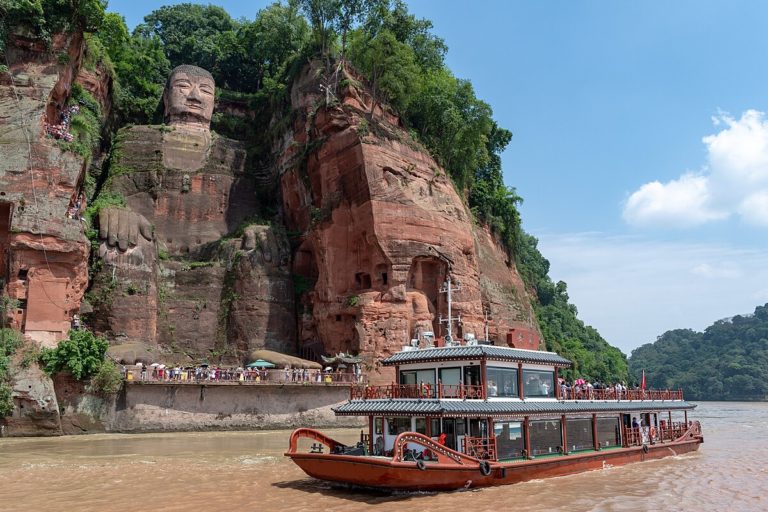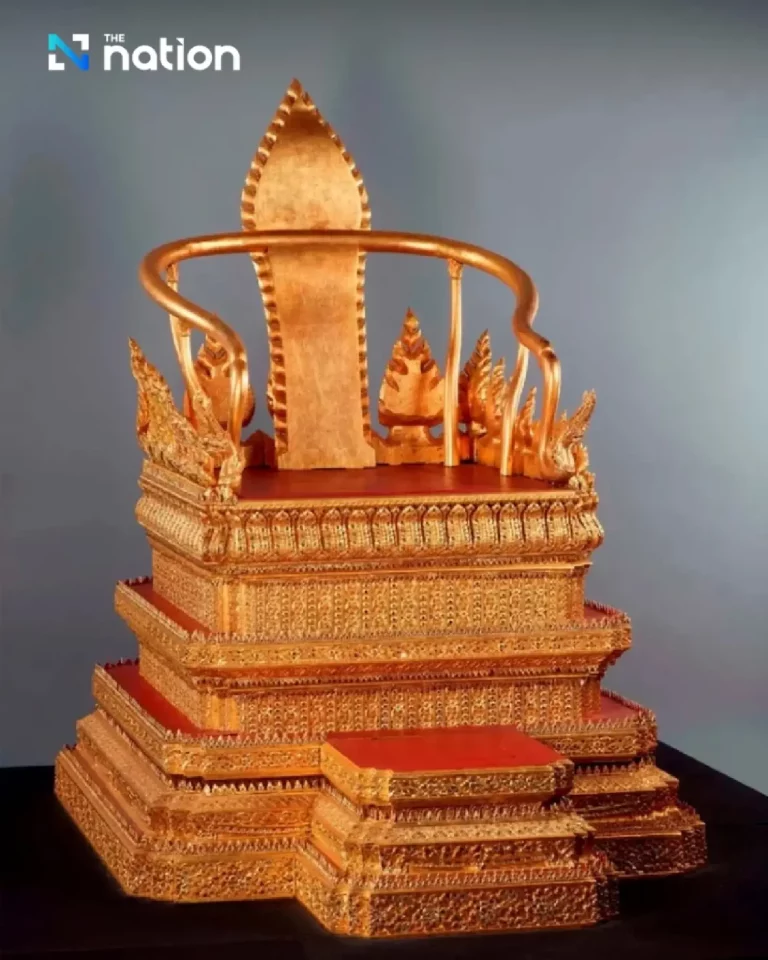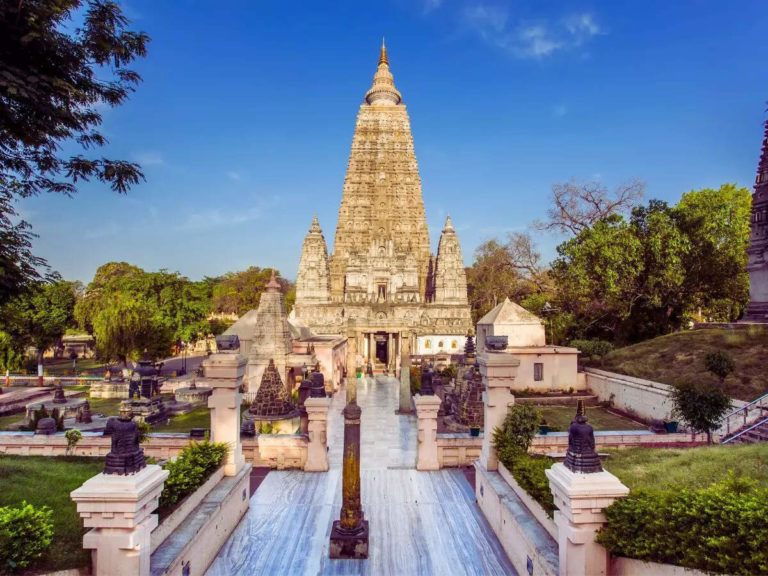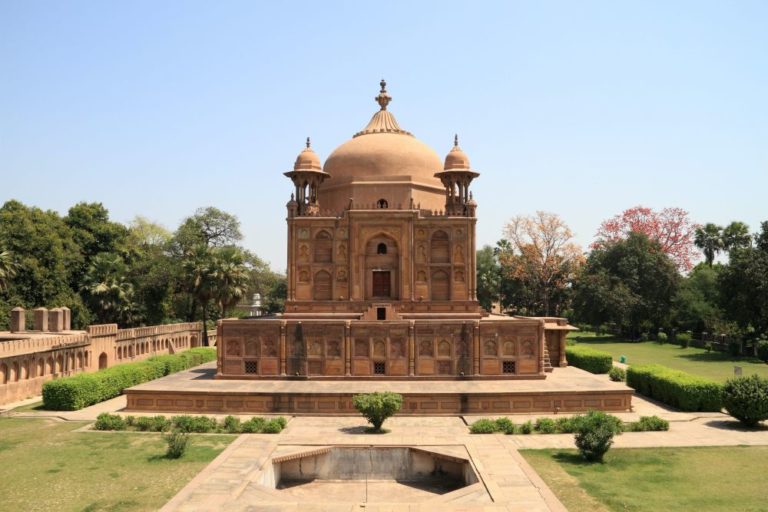The elegantly carved feline figures from the third century B.C., unearthed by the British in northern India, embody both tenets of Buddhism and the power of the emperor.
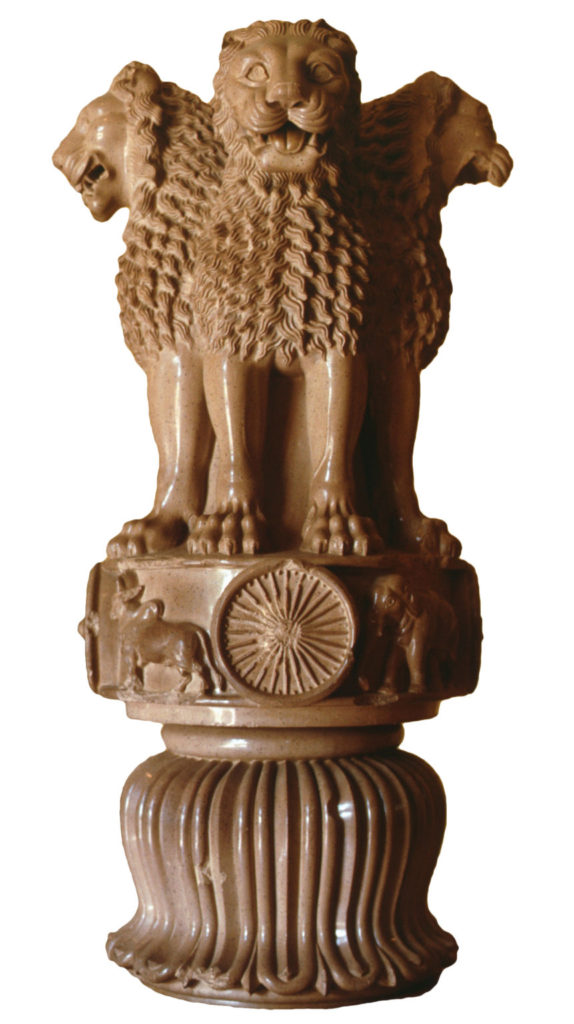
Among the great artistic objects found by chance, one must include the Ashokan Lion Capital at the Archaeological Museum of Sarnath in northern India. Several miles away, on the Ganges, lies the Hindu pilgrimage destination Varanasi, a teeming holy ground for cremation and purification. By contrast, well-manicured Sarnath, one of Buddhism’s four holy sites, is an orderly place for contemplative commemoration, with remnants of monasteries and other Buddhist structures. It lay buried for centuries until British excavations uncovered a trove of artifacts at the turn of the 20th century. The museum itself opened in 1910. The Lion Capital (c. 250 B.C.) is the jewel in the crown of treasures excavated here. That we have it in a damaged form detracts nothing from its consequence.
Site of Buddha’s First Sermon
The most celebrated of the Ashokan pillars is the one erected at Sarnath, the site of Buddha’s First Sermon where he shared the Four Noble Truths (the dharma or the law). Currently, the pillar remains where it was originally sunk into the ground, but the capital is now on display at the Sarnath Museum. It is this pillar that was adopted as the national emblem of India. It is depicted on the one rupee note and the two rupee coin.
The pillar
The pillar is a symbol of the axis mundi and of the column that rises every day at noon from the legendary Lake Anavatapta to touch the sun.
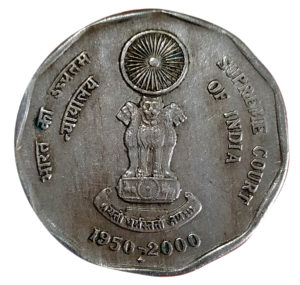
Two Rupees Commemorative Coin issued in 2000 on the 50th Anniversary of the Supreme Court of India (photo: P. L. Tandon, CC BY-NC-SA 2.0)
The capital
The top of the column—the capital—has three parts. First, a base of a lotus flower, the most ubiquitous symbol of Buddhism.
Then, a drum on which four animals are carved represents the four cardinal directions: a horse (west), an ox (east), an elephant (south), and a lion (north). They also represent the four rivers that leave Lake Anavatapta and enter the world as the four major rivers. Each of the animals can also be identified by each of the four perils of samsara. The moving animals follow one another, endlessly turning the wheel of existence.
Four lions stand atop the drum, each facing in the four cardinal directions. Their mouths are open, roaring or spreading the dharma, the Four Noble Truths, across the land. The lion references the Buddha, formerly Shakyamuni, a member of the Shakya (lion) clan. The lion is also a symbol of royalty and leadership and may also represent the Buddhist king Ashoka who ordered these columns. A cakra (wheel) was originally mounted above the lions.
Some of the lion capitals that survive have a row of geese carved below the lions. The goose is an ancient Vedic symbol. The flight of the goose is thought of as a link between the earthly and heavenly spheres.
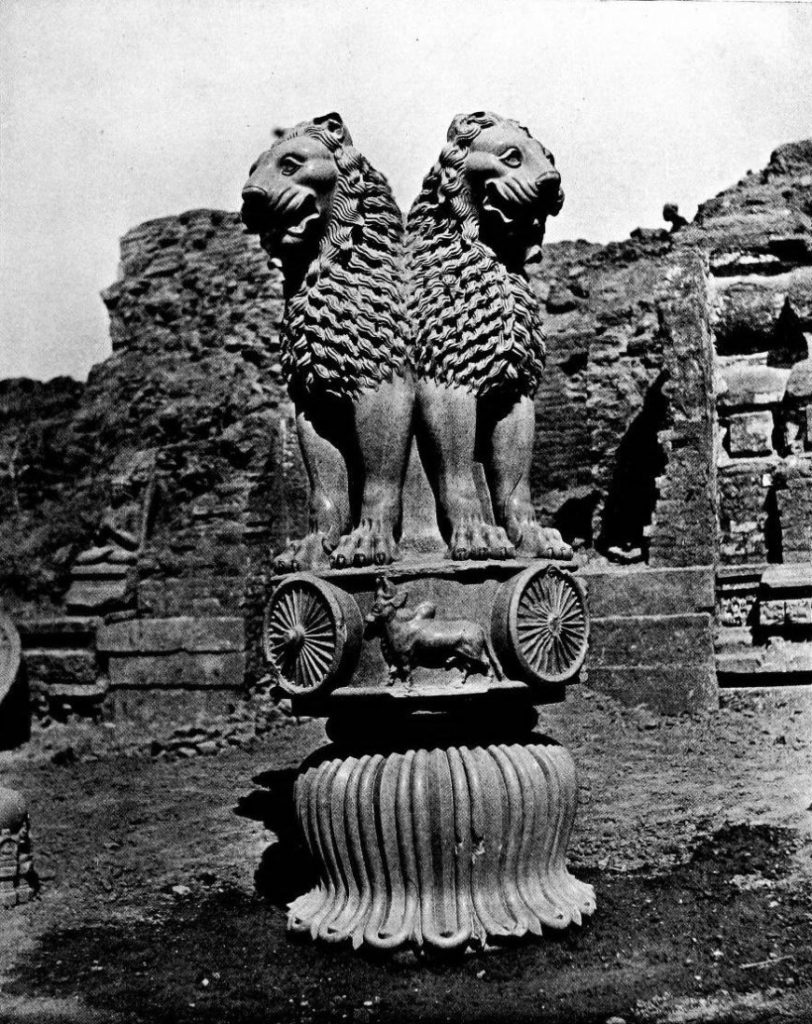
Lion Capital, Ashokan Pillar at Sarnath, c. 250 B.C.E., polished sandstone, 210 x 283 cm, Sarnath Museum, India (photo: Shyamal)
The pillar reads from bottom to top. The lotus represents the murky water of the mundane world, and the four animals remind the practitioner of the unending cycle of samsara as we remain, through our ignorance and fear, stuck in the material world. But the cakras between them offer the promise of the Eightfold Path that guides one to the unmoving center at the hub of the wheel. Note that in these particular cakras, the number of spokes in the wheel (eight for the Eightfold Path), had not yet been standardized.
The lions are the Buddha himself from whom the knowledge of release from samsara is possible. And the cakra that once stood at the apex represents moksa, the release from samsara. The symbolism of moving up the column toward Enlightenment parallels the way in which the practitioner meditates on the stupa in order to attain the same goal.

